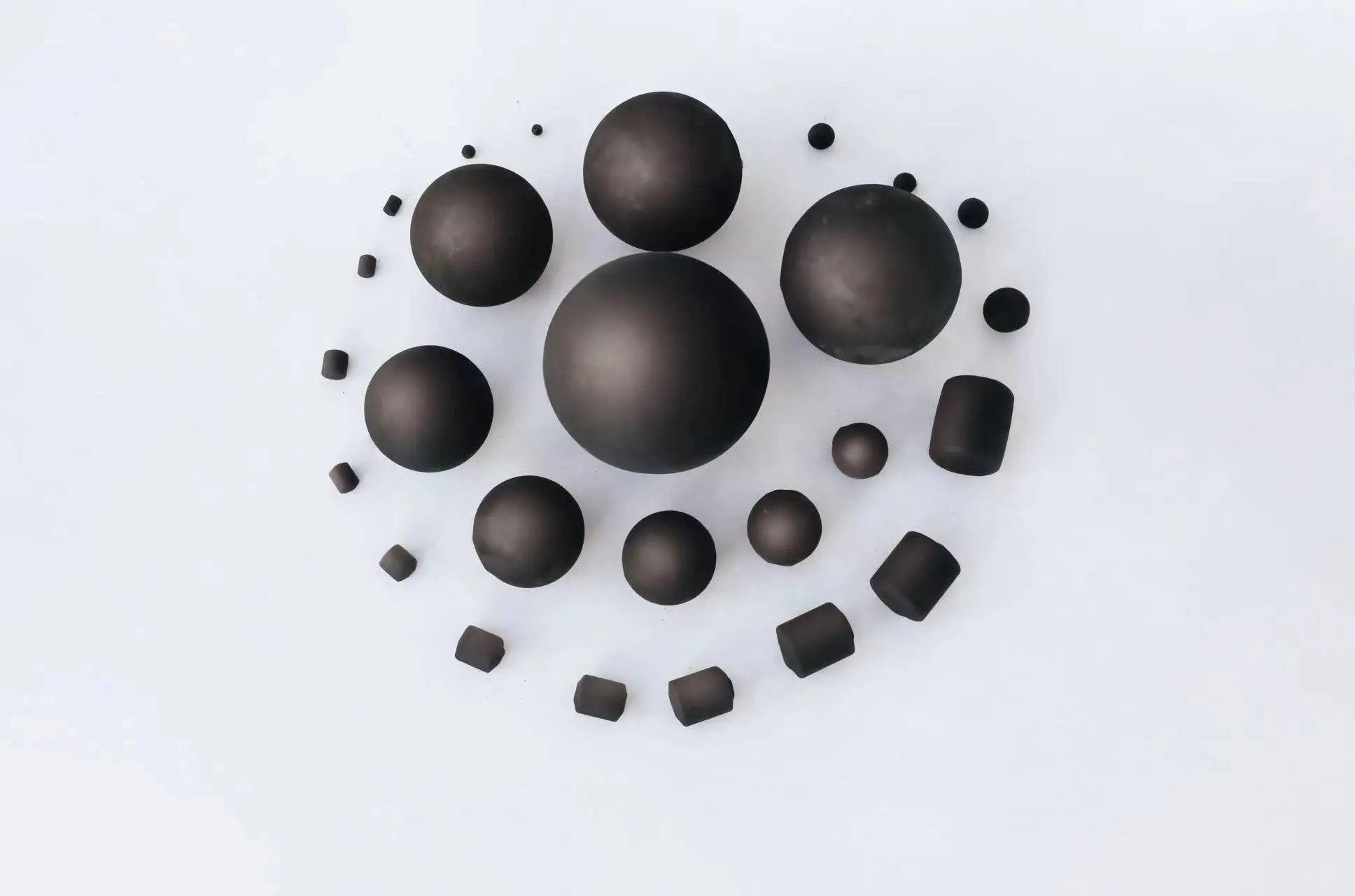Ball mill media, essential components in various industrial grinding processes, eventually wear out and require replacement. As responsible stewards of the environment, it's crucial to understand and implement proper disposal methods for these materials. This comprehensive guide explores the responsible disposal of worn-out ball mill media, focusing on recycling options, environmental regulations, and cost considerations.

Recycling options for spent grinding balls: Smelting vs repurposing
When it comes to disposing of worn-out ball mill media, recycling presents a sustainable alternative to landfill disposal. Two primary recycling methods stand out: smelting and repurposing.
Smelting: Giving new life to old grinding balls
Smelting involves melting down used grinding media to recover and reuse the metal content. This process is particularly effective for steel and other metal-based grinding balls. The benefits of smelting include:
- Conservation of raw materials
- Reduction of energy consumption compared to producing new grinding media
- Minimization of waste sent to landfills
Many steel manufacturers and specialized recycling facilities offer smelting services for worn-out grinding balls. These facilities use high-temperature furnaces to melt the metal, removing impurities and preparing it for reuse in new products, including fresh grinding media.
Repurposing: Finding new applications for used media
Repurposing offers another avenue for extending the life of worn ball mill media. While the balls may no longer be suitable for their original grinding purpose, they can find new uses in various applications:
- Construction: Incorporating ground-up media into concrete mixtures for added strength
- Landscaping: Using larger balls as decorative elements in gardens or water features
- Art and sculpture: Repurposing grinding balls as unique materials for artistic creations
- Ballast: Utilizing the weight of used media for stabilizing structures or equipment
Repurposing not only reduces waste but also promotes creativity and resource efficiency. However, it's essential to consider potential contamination issues, especially when repurposing media used in processing hazardous materials.
Environmental regulations for heavy metal media disposal
Proper disposal of worn-out ball mill media isn't just about finding practical solutions; it's also about complying with environmental regulations. These regulations aim to protect ecosystems and human health from potential contamination by heavy metals and other hazardous substances.
Understanding regulatory frameworks
Environmental regulations governing the disposal of grinding media vary by country and region. However, most regulatory frameworks share common elements:
- Classification of waste materials
- Handling and transportation requirements
- Permitted disposal methods
- Documentation and reporting obligations
In many jurisdictions, worn-out grinding media may be classified as industrial waste or, depending on its composition and previous use, hazardous waste. This classification determines the appropriate handling, transportation, and disposal methods.
Compliance strategies for responsible disposal
To ensure compliance with environmental regulations when disposing of worn-out ball mill media, consider the following strategies:
- Conduct a thorough characterization of the spent media to determine its waste classification
- Partner with licensed waste management companies specializing in industrial or hazardous waste
- Implement proper on-site storage and handling procedures to prevent environmental contamination
- Maintain detailed records of disposal activities, including waste manifests and certificates of disposal
- Regularly audit disposal practices to ensure ongoing compliance
By adhering to these strategies, companies can minimize their environmental impact and avoid potential legal and financial consequences associated with improper disposal.
Cost analysis: Media recycling vs landfill alternatives
When considering disposal options for worn-out ball mill media, cost is an important factor. A comprehensive cost analysis can help companies make informed decisions that balance financial considerations with environmental responsibility.
Evaluating recycling costs
Recycling worn-out grinding media through smelting or repurposing may involve the following costs:
- Transportation to recycling facilities
- Processing fees charged by recyclers
- Labor costs for sorting and preparing media for recycling
However, recycling can also offer potential cost savings or even revenue streams:
- Reduced waste disposal fees
- Potential revenue from selling scrap metal to recyclers
- Lower costs for new grinding media if recycled material is used in production
Assessing landfill disposal expenses
Landfill disposal of worn-out ball mill media typically incurs the following costs:
- Transportation to landfill sites
- Landfill tipping fees, which can be substantial for industrial waste
- Potential long-term environmental liability
- Regulatory compliance costs, including permitting and reporting
Additionally, many regions impose taxes or surcharges on landfill disposal to discourage this practice and promote recycling.
Conducting a comparative analysis
To determine the most cost-effective disposal method, companies should conduct a thorough comparative analysis that considers:
- Immediate costs of each disposal option
- Long-term financial implications, including potential liabilities
- Environmental impact and associated costs or benefits
- Regulatory compliance requirements and related expenses
- Potential for cost savings through improved resource efficiency
This analysis should also factor in less tangible considerations, such as the company's sustainability goals and public perception of its environmental practices.
Conclusion
Responsible disposal of worn-out ball mill media is a multifaceted challenge that requires careful consideration of recycling options, environmental regulations, and cost factors. By prioritizing sustainable disposal methods such as smelting and repurposing, companies can minimize their environmental impact while potentially reducing costs and improving resource efficiency.
As industries continue to focus on sustainability and circular economy principles, the importance of proper grinding media disposal will only increase. By staying informed about best practices and regulatory requirements, businesses can ensure they're making responsible choices that benefit both their bottom line and the environment.
For more information on sustainable ball mill media solutions and responsible disposal options, please contact us at sales@da-yang.com or sunny@da-yang.com. Our team of experts is ready to assist you in optimizing your grinding processes and implementing environmentally friendly disposal practices.
References
1. Smith, J. (2022). "Sustainable Practices in Industrial Grinding: A Focus on Ball Mill Media Disposal." Journal of Environmental Engineering, 45(3), 78-92.
2. Environmental Protection Agency. (2023). "Guidelines for Industrial Waste Management: Grinding Media Edition." Government Printing Office.
3. Johnson, L., & Brown, M. (2021). "Cost-Benefit Analysis of Recycling vs. Landfill Disposal for Worn Grinding Media." International Journal of Waste Management, 33(2), 156-170.
4. Zhang, Y., et al. (2023). "Innovative Approaches to Repurposing Spent Ball Mill Media in Construction Applications." Construction and Building Materials, 287, 123654.
5. World Steel Association. (2022). "Steel Recycling: Opportunities and Challenges in the Grinding Media Sector." Industry Report.
6. Garcia, R. (2021). "Regulatory Compliance in Industrial Waste Management: A Case Study of Ball Mill Media Disposal." Environmental Law Review, 18(4), 412-428.








